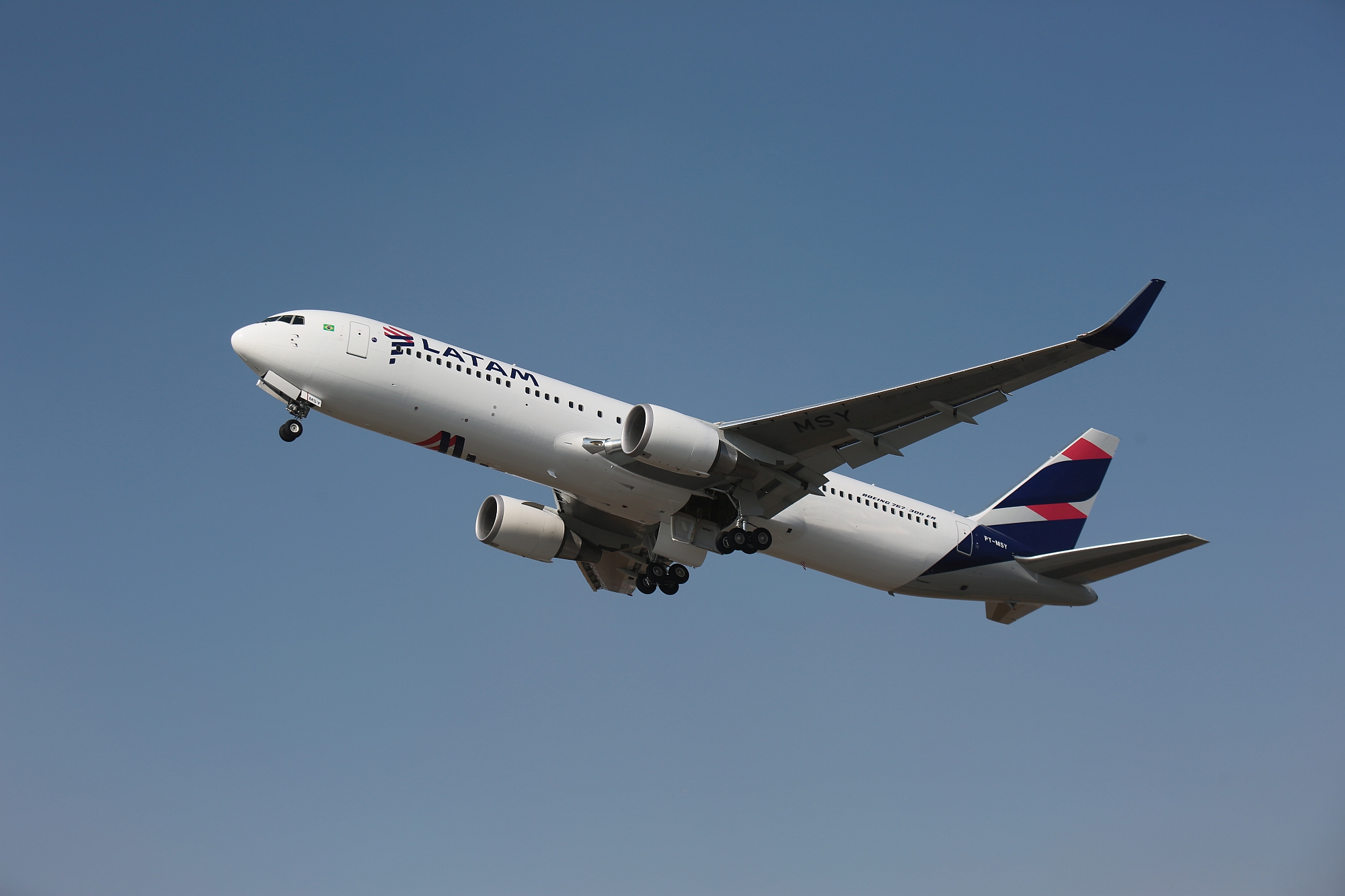São Paulo – Brazilian airlines carried over 4.5 million passengers in international flights from January to June, up 14.32% over the same period of last year, according to data shown this Thursday (26) by the Brazilian Airlines Association (ABEAR). The association reports that these numbers account to 30% of all international traffic from and to Brazil, with the remaining coming from flights by international carriers.
According to ABEAR, international air passenger demand rose 15.8% in the same comparison. This indicator considers the total number of paying passengers multiplied by the distance traveled, that is, it includes different distances, thus, the variation margin regarding the effective number of travelers.
On the other hand, supply saw a sharper increase in the year’s first six months, 19.35%, which took the occupancy rate down 2.54 percentage points to 82.6%.
International flights market share among Brazilian airlines was led by Latam (picture above), with 68.64%, followed by Azul (15.2%), Gol (9.91%) and Avianca (6.25%).

In the domestic flights market, Brazilian airlines carried 44.5 million passengers from January to June, up 3.23% over 2017’s first six months. Demand climbed 4.27% in the same comparison, with supply increasing 4.31%. Occupancy rate dropped 0.03 percentage point to 80.28%.
In the domestic market, the top position was held by Gol (35.7%), followed by Latam (31.95%), Azul (18.49%) and Avianca (13.86%).
June
In June, Brazilian airlines carried 656,000 passengers in international flights, up 9.99% over the same month of last year. Demand climbed 16.3%, with supply rising 23.77%, which took occupancy rate down 4.9 percentage points to 80.01%.
In domestic flights, in June, domestic airlines carried 7.1 million passengers, up 3.66% in the same comparison. Demand increased 5.19%, with supply going up 8.2%, with an occupancy rate of 78.01%, a decline of 2.23 percentage points.
ABEAR reported that year-over-year ending in June, Brazilian companies carried over 100 million passengers. It’s the first time that this mark is surpassed in a 12-month period since the beginning of 2016.
Translated by Sérgio Kakitani




